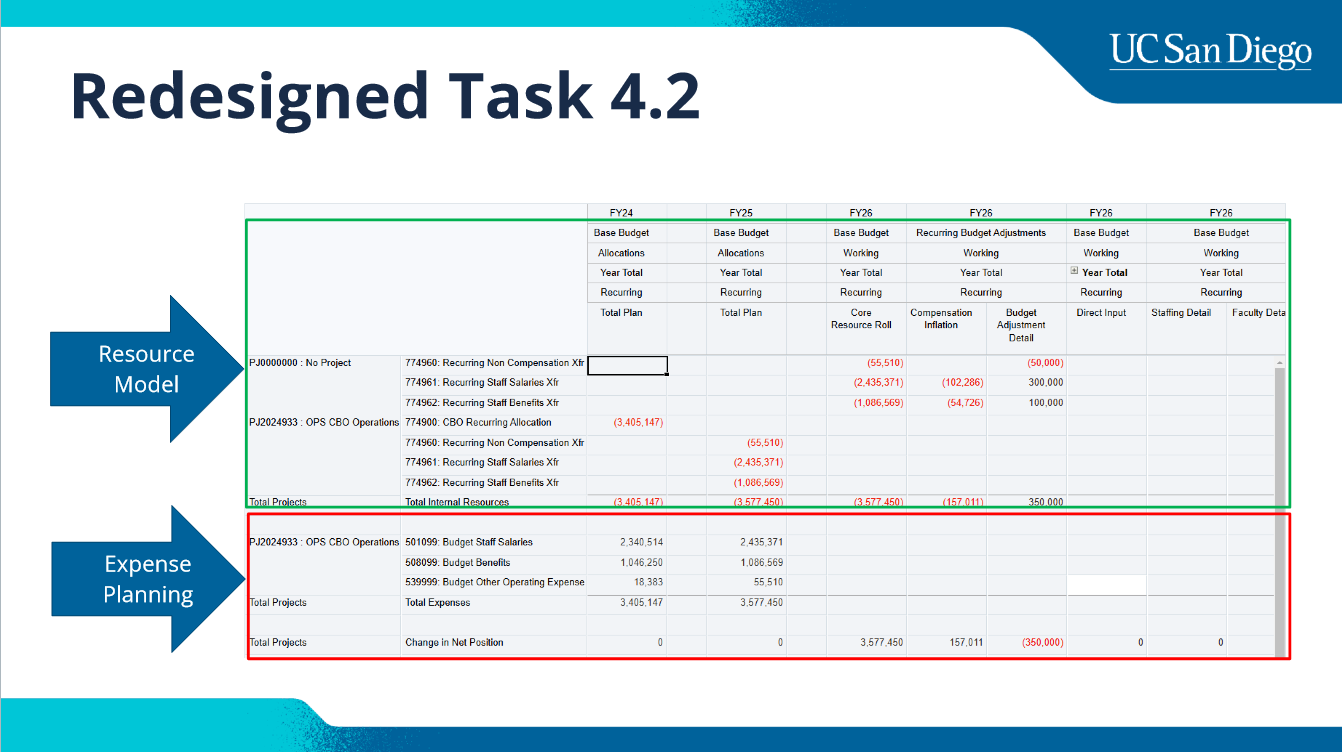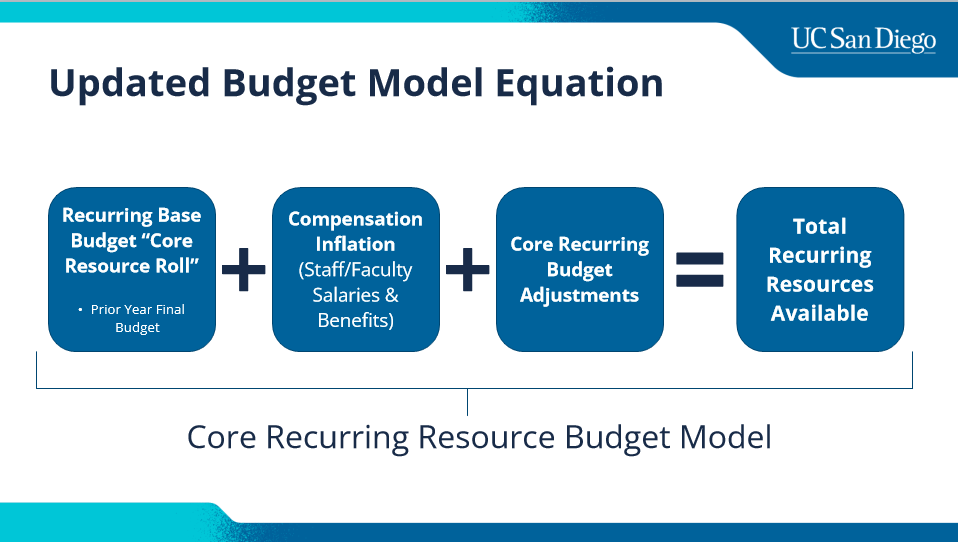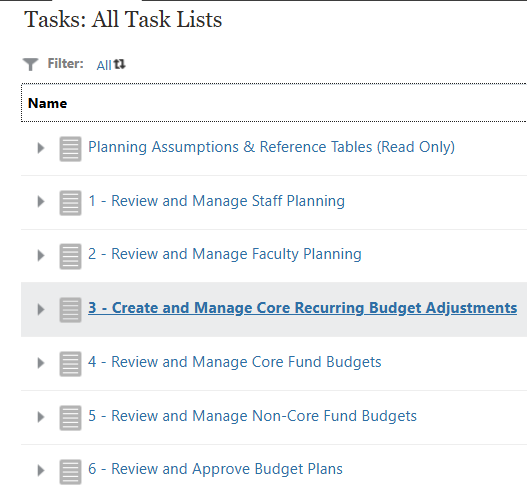FY26 Budget Process
The FY26 planning cycle included several significant enhancements to the UCSDPLAN system, designed to improve data accuracy and system performance.
The most notable changes included an updated Core Recurring Resource Budget Model and the addition of a new Budget Adjustment Module, along with the launch of the Budget Distribution Page (BDP) on UCPath.
These changes aimed to streamline the budget process and provide more accurate and reliable data for financial planning and decision-making. In the following sections, we will provide more information about these changes and their impact on the budgeting process.
We put together a short video outlining two of the major changes for the FY26 budget process. Each major update is covered in more detail in the sections below.
Core Recurring Resource Budget Model
The Core Recurring Resource Budget Model represents the total Core Recurring resources available for expense planning for the budget year. Effective for the FY26 planning cycle, the Target Budget is discontinued and replaced with this new model. The updated model aimed to simplify core recurring resources, increase transparency, enable resource control, and streamline reconciliation for units. The model included compensation inflation and research revenue sharing (Indirect Cost Recovery) funding to VC Offices.

This new model lives in Task 4.2, which was updated to include a revamped Profit and Loss (P/L) type view, displaying the core recurring resource budget model in the top section and expense planning in the bottom section. Key items to note when interacting with this form include the management of core recurring resources at the F-F-F-Project Zero level, with expenses planned at the F-F-F-Detailed project level. Budget preparers use this form to balance expenses within resources available.

Here is the basic equation for this new core recurring budget model. We start with the Recurring Base Budget, which is the prior year’s final budget. To that we add Compensation Inflation, which is the approved salary increases for both represented and policy-covered faculty/staff applied to the most recent recurring salary/benefits budgets. Finally, we add any Core Recurring Budget Adjustments, which are records from the new Budget Adjustment Module that we’ll be discussing next. Together, this equals the Total Recurring Resources Available that is displayed in UCSDPLAN.
Budget Adjustment Module
In support of year-round management of the Core Recurring Resource Budget Model, the new Budget Adjustment Module enables the direct entry of recurring budget adjustments for the budget year. This differs from an OFC Journal to transfer resources, as a financial journal does not update the budget. Conversely, entries in the Budget Adjustment Module are not the same as a financial journal as they do not impact current year resources on the General Ledger.
The Budget Adjustment Module is available via Task List 3, which now includes a transactional module for entering and processing recurring resource budget adjustments.

Budget Distribution Page (BDP)
Budget distribution refers to the allocation and management of core recurring funds to staff and faculty positions in your department. The Budget Distribution Page can be accessed on UCPath and is used to manage both the filled and open Provisions that appear on your departmental Staffing List report. It is a tool for departments to use in managing their budget data to ensure recurring budget covers recurring staffing commitments.
Access to the Budget Distribution Page is managed by the UCPath team, and requires the completion of several training modules on the UC Learning Center. Detailed instructions are available on the UCPath CORE Training site.
Key Dates and Deadlines
Budget Guidelines
2025-26 Campus Budget Guidelines - 2/3/25
2024-25 campus budget guidelines - Updated 3/7/2024
2024-25 campus budget guidelines - 2/5/2024
2023-24 Campus Budget Guidelines - Updated 3/22/2023
2023-24 Campus Budget Guidelines - 2/2/2023
2022-23 Campus Budget Guidelines - 3/8/2022
2022-23 Campus Budget Guidelines - 1/24/2022
2021-22 Campus Budget Guidelines - 2/26/2021
Communications and Engagement
Stay up-to-date on the latest communications and join our Budget and Planning Community of Practice Channel.
- Budget & Finance Weekly Digest - Read Past Issues Here
- Community of Practice (COP) - The Budget and Planning COP Channel audience includes Budget SMEs and Budget Preparers identified by each Vice Chancellor Office with responsibility to create Financial Unit budgets within UCSDPLAN.
Training
Attend a Budget and Finance training course to improve your understanding of the financial information system. Courses include basic training on financial processes to in-depth instruction on advanced concepts.
Stay Up-to-Date
Stay up-to-date on all thing budget process by joining our Budget and Planning Community of Practice Channel on Microsoft Teams.